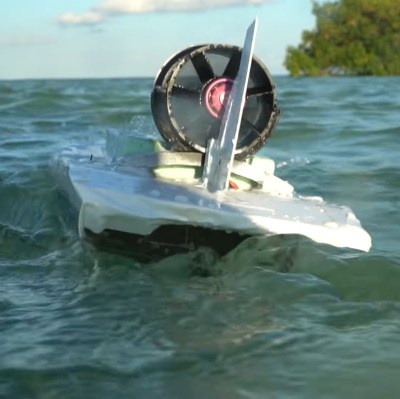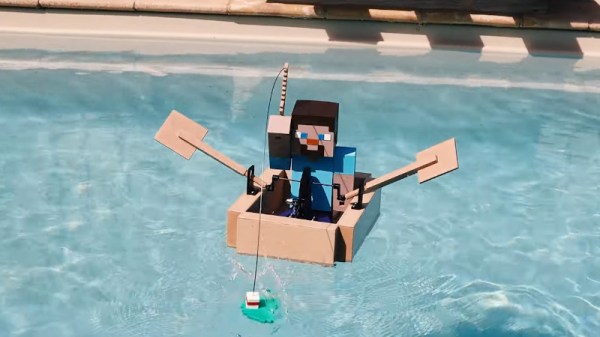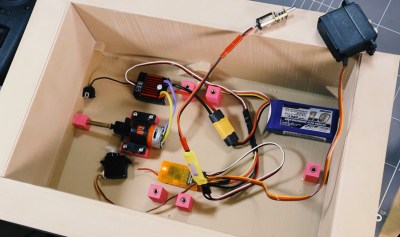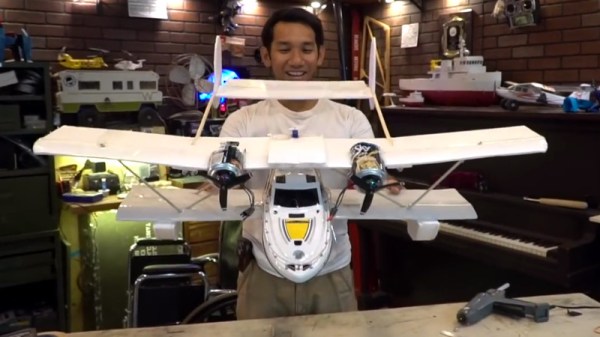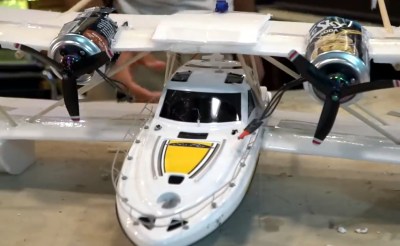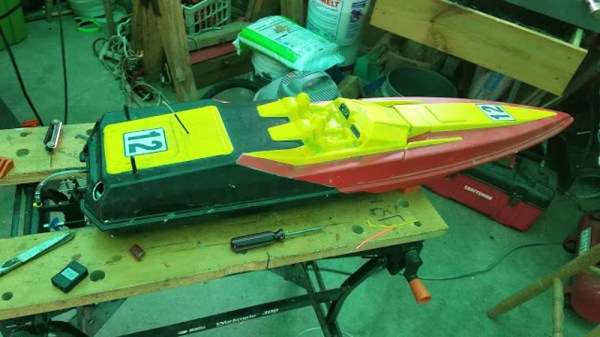[CovaConcepts], who has a background in motorsports, has been busy designing an unconventional radio-controlled watercraft she calls the HydraJet.
There are two key design decisions that make the HydraJet what it is. First, she chose to propel the boat by pushing against the air via an electric ducted fan (EDF) rather than the water via a traditional water propeller. This simplified construction and made it more affordable, partly because she already had the fan on hand.
Her other design choice was to use wings underneath the boat to lift it out of the water. Not as hydrofoils, where the wings ride below the surface of the water, but for hydroplaning where the wings ride on the surface of the water. Lifting the vehicle out of the water, of course, reduces drag, improving performance as we’ve often seen with high speed watercraft (including RC models) as well as slower bicycle-powered ones. The choice to rely on hydroplaning also reduces the complexity of the design. Certain hydrofoil designs need to make adjustments in order to keep the vehicle at a steady level, whereas a hydroplaning wings can use a static angle. Hydrofoils also must overcome challenges to maintain stability.
[CovaConcepts] hopes to eventually scale the HydraJet up large enough to carry human passengers and we’re looking forward to the opportunity to take it for a spin around the lake.
Continue reading “Hydroplaning RC Jet Boat Steers Clear Of Convention”



